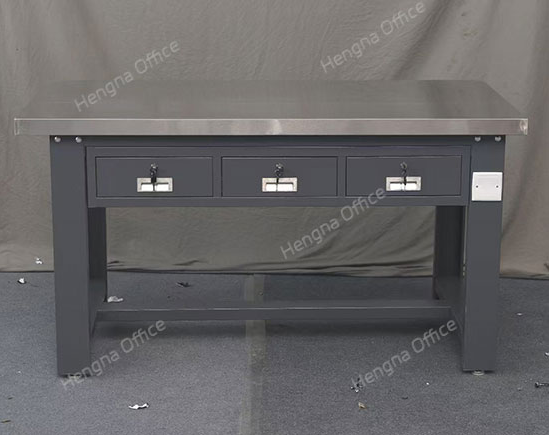What Factors Matter When Picking a Heavy – Duty Workbench?
When it comes to outfitting a workshop, factory floor, or any space where robust and reliable work surfaces are essential, choosing the right heavy – duty workbench is a decision that can impact productivity, safety, and the overall efficiency of operations. What Factors Matter When Picking a Heavy – Duty Workbench? There are several key factors to take into account to ensure that the workbench selected meets the specific needs of the environment and the tasks at hand.

1.Load – Bearing Capacity
The first and perhaps most crucial factor is the load – bearing capacity of the workbench. Different industrial and workshop settings involve working with varying weights of materials, tools, and equipment. A heavy – duty workbench should be able to support the maximum weight that will be placed on it during regular use. This includes not only the static weight of tools and materials but also any dynamic loads that may occur during processes like hammering, machining, or assembly. For example, in a metalworking shop, where large and heavy metal sheets or components are handled, a workbench with a high load – bearing capacity, potentially in the range of several thousand pounds, is necessary to prevent structural failure.
2.Construction Materials
The materials used in constructing the heavy – duty workbench play a significant role in its durability and performance. Steel is a popular choice for the frame and base due to its strength and resilience. High – quality steel, such as cold – rolled steel, can withstand heavy impacts and resist warping over time. The worktop material is also important. Options include stainless steel, which is resistant to corrosion, stains, and heat, making it suitable for environments where chemicals or high temperatures are involved, like in a laboratory or food processing facility. Wood – based worktops, such as those made from solid wood or composite materials, can offer a more traditional look and may be preferred for tasks that require a softer surface, but they need to be properly treated to resist wear and damage.
3.Worktop Size and Layout
The size of the worktop is directly related to the types of tasks that will be performed. A larger worktop provides more space for spreading out materials, tools, and equipment, which is beneficial for tasks like assembly or woodworking. However, it’s also important to consider the available space in the workshop. The layout of the workbench, including the presence of drawers, shelves, or tool racks, can greatly enhance organization and accessibility. Drawers with proper partitioning can keep small tools and components neatly arranged, while open shelves can be used for storing larger items or frequently used materials.
4.Mobility and Stability
Depending on the nature of the work, mobility may be a desired feature. Some heavy – duty workbenches come with casters, allowing them to be easily moved around the workshop. This can be useful for reconfiguring the workspace or for cleaning purposes. However, when mobility is provided, stability should not be compromised. The casters should be of high quality, able to support the weight of the workbench and its load, and should have locking mechanisms to keep the workbench stationary during use. For workbenches that are not mobile, a stable base design is essential to prevent wobbling or tipping, especially when heavy loads are placed on one side.
5.Ergonomics
Ergonomics is an often – overlooked but important factor. The height of the workbench should be suitable for the tasks and the users. In a workshop where workers spend long hours standing at the bench, an adjustable – height workbench can help prevent fatigue and potential musculoskeletal issues. The placement of drawers, handles, and other components should also be designed to be easily reachable without excessive bending or stretching.
6.Resistance to Environmental Factors
The work environment can pose various challenges to a heavy – duty workbench. In a damp or humid environment, such as a plumbing workshop or a marine repair facility, the workbench should be resistant to rust and corrosion. In a dusty environment, like a woodworking shop, the materials and design should allow for easy cleaning to prevent the accumulation of debris that can affect the functionality and lifespan of the workbench.
In conclusion, picking the right heavy – duty workbench requires a comprehensive assessment of factors such as load – bearing capacity, construction materials, worktop size and layout, mobility and stability, ergonomics, and resistance to environmental factors. By carefully considering these aspects, one can select a workbench that will serve as a reliable and efficient workspace for years to come.
It’s worth noting that companies like Luoyang Hengna Office Furniture Co., Ltd. specialize in providing a range of office and industrial furniture, including heavy – duty workbenches. Their expertise can be valuable in navigating the various options and finding a workbench that meets the specific requirements of different work settings.
